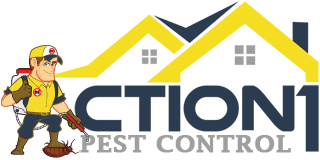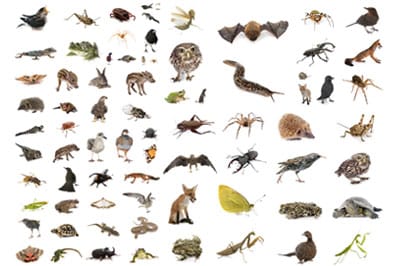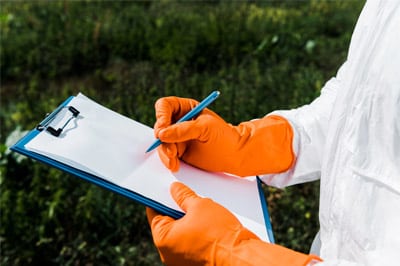Flea and Tick Control and Extermination
Call Us Today- Home
- »
- Pest Control
- »
- Flea & Tick Exterminator
The most effective flea and tick control combines consistent preventive treatments with regular monitoring and environmental management. Modern prevention options have become safer and more effective than ever before, giving us multiple ways to protect our pets through oral medications, topical treatments, collars, and household products.
We’ll explore the biology of these parasites, examine the health threats they present, and why you should choose Action 1 Pest Control to help you. Understanding your options and implementing a comprehensive approach will help keep your pets comfortable and your family safe from these persistent pests.
Highly Trusted Flea and Tick Control Company

High Quality Services

Affordable & Upfront Pricing

Emergency Same Day Service
Understanding Fleas and Ticks
Flea Life Cycle
Egg Stage: Female fleas can lay up to 50 eggs daily. These smooth, white eggs represent about 50% of the total flea population in any environment.
Larval Stage: Eggs hatch into small, worm-like larvae within 2-14 days. Larvae feed on organic debris and adult flea feces, which contains partially digested blood.
Pupal Stage: Larvae spin cocoons and enter the pupal stage. This phase lasts 5-14 days under ideal conditions but can extend to several months in cooler temperatures.
Adult Stage: Newly emerged adult fleas immediately seek a host for their first blood meal. Without feeding, adult fleas die within a few days, but fed fleas can live several months.
Tick Species and Behavior
Common Species: Black-legged ticks transmit Lyme disease, while American dog ticks spread Rocky Mountain spotted fever. Lone star ticks are aggressive biters that can cause alpha-gal syndrome.
Feeding Behavior: Ticks use specialized mouthparts to anchor firmly to their host. They secrete cement-like substances to maintain attachment during feeding periods that can last 3-10 days.
Host-Seeking: Ticks practice “questing” behavior, climbing onto grass and vegetation with front legs extended to grab passing hosts. They detect hosts through carbon dioxide, body heat, and vibrations.
How Infestations Develop
Environmental Factors: Warm temperatures (70-85°F) and moderate humidity (70%) accelerate flea development. Carpeted areas and pet sleeping spots become primary breeding grounds.
Population Explosion: A single female flea can produce 2,000 eggs during her lifetime. Under ideal conditions, we can see a complete generation develop in just 14 days.
Tick Establishment: Tick infestations occur when these parasites are carried indoors by pets or humans. Brown dog ticks can complete their entire life cycle indoors, establishing permanent populations in homes.
Seasonal Patterns: Peak flea activity occurs during warm months, while tick activity varies by species. Some ticks remain active during winter months when temperatures rise above freezing.
Our 5 Step Pest and Tick Control Process

Health Risks Associated With Fleas and Ticks
Diseases Transmitted to Pets
Heavy flea infestations lead to flea anemia, particularly dangerous for puppies, kittens, and senior pets. The blood loss can cause lethargy, weakness, and pale gums requiring emergency veterinary care.
Common flea-borne diseases include:
- Tapeworms transmitted when pets ingest infected fleas
- Bartonellosis (Cat Scratch Disease)
- Feline infectious anemia
- Bubonic plague in endemic regions
Ticks transmit more serious diseases directly into pets’ bloodstreams. Rocky Mountain spotted fever causes fever, joint pain, and neurological symptoms in dogs.
Major tick-borne diseases affecting pets:
- Lyme disease – joint pain, lameness, kidney problems
- Anaplasmosis – fever, bleeding disorders, lethargy
- Ehrlichiosis – weight loss, bleeding, neurological signs
- Babesiosis – anemia, jaundice, enlarged spleen
Tick paralysis occurs when neurotoxins in tick saliva cause progressive weakness and respiratory distress. This condition requires immediate tick removal and veterinary intervention.
Risks to Humans
Ticks pose greater risks to human health. Rocky Mountain spotted fever causes high fever, headache, and characteristic rash in humans. Without treatment, it can be fatal.
Human tick-borne diseases include:
- Lyme disease with joint pain and neurological symptoms
- Anaplasmosis causing flu-like symptoms
- Ehrlichiosis leading to severe headaches and muscle aches
- Babesiosis particularly dangerous for immunocompromised individuals
Children and elderly family members face higher risks due to weaker immune systems. Pregnant women infected with certain tick-borne diseases may experience complications affecting fetal development.
Recognizing Health Symptoms
- Excessive scratching, licking, or biting at skin
- Lethargy and weakness
- Pale gums or mucous membranes
- Loss of appetite and weight loss
- Lameness or joint swelling
- Fever and breathing difficulties
Human symptoms warranting medical evaluation:
- Fever developing after tick exposure
- Circular rash around tick bite sites
- Severe headaches and muscle aches
- Joint pain and swelling
- Flu-like symptoms during tick season
We should monitor both pets and family members for 2-4 weeks after known flea or tick exposure. Early detection and treatment significantly improve outcomes for most parasitic diseases. Document when and where tick bites occurred to help healthcare providers assess disease risks. Take photos of any unusual rashes or bite sites for medical reference.
Preventive Measures for Flea and Tick Control
Environmental Management
Yard Maintenance Tasks:
- Mow grass weekly during warm months
- Remove leaf litter and debris piles
- Trim shrubs and bushes regularly
- Clear brush from property borders
We should focus on landscaping choices that discourage host animals like deer and rodents. Plants such as lavender, mint, and rosemary naturally repel fleas and ticks.
Effective Landscaping Strategies:
- Choose deer-resistant plant varieties
- Create gravel or wood chip barriers
- Install fencing around gardens
- Remove bird feeders that attract wildlife
Outdoor pesticide applications can reduce tick numbers in treated yard areas. We recommend applying these treatments during peak activity periods in spring and fall.
Routine Pet Checks
Key Inspection Areas:
- Base of ears and neck
- Under front legs and chest
- Between toes and paw pads
- Tail base and hindquarters
We need to examine our pets immediately after outdoor activities. Ticks require 24-48 hours of attachment to transmit diseases, making prompt removal crucial. Regular bathing with appropriate shampoos helps eliminate adult fleas and their eggs. We should use lukewarm water and work the lather into the coat for several minutes before rinsing completely.
Cleaning and Home Maintenance
Essential Cleaning Tasks:
- Vacuum carpets, rugs, and furniture daily
- Wash pet bedding in hot water weekly
- Steam clean upholstery monthly
- Dispose of vacuum bags immediately
We must focus on areas where our pets spend the most time. Flea larvae develop in carpet fibers, under furniture, and in pet sleeping areas.
High-Priority Cleaning Zones:
- Pet beds and favorite resting spots
- Cracks between floorboards
- Underneath furniture cushions
- Basement and crawl space areas
Regular washing of pet bedding and toys in hot water eliminates all life stages of fleas and ticks. We should maintain water temperatures above 140°F for maximum effectiveness.
Types of Flea and Tick Treatments
Topical Solutions
Popular topical options include:
- Frontline Plus – Contains fipronil and methoprene to kill fleas, ticks, and lice
- Advantix – Uses imidacloprid and permethrin for broad-spectrum protection
- Revolution – Provides selamectin for fleas, ticks, and heartworm prevention
- Bravecto Topical Solution – Offers 12 weeks of protection with fluralaner
We apply these treatments monthly in most cases. Bravecto topical extends protection to three months per application.
The medication kills parasites on contact and prevents new infestations. Most topical solutions remain effective even after bathing, though we recommend waiting 48 hours before getting your dog wet.
Key considerations: Cats can be poisoned by permethrin-based dog products. Keep treated dogs away from cats until the application site dries completely.
Oral Medications
Leading oral products include:
- Simparica Trio – Monthly chew protecting against fleas, ticks, heartworms, and intestinal worms
- Bravecto Chew – Provides 12 weeks of flea and tick protection
- NexGard Plus – Monthly chew combining flea & tick control with heartworm prevention
Oral medications work quickly. Most kill fleas within 4-8 hours and ticks within 12-24 hours of administration. We find oral treatments ideal for households with young children or multiple pets. There’s no residue on fur or skin that others might contact. The most common side effect is vomiting, especially if given on an empty stomach. Some dogs with seizure histories should avoid certain oral preventatives.
Collars and Shampoos
Seresto collars contain imidacloprid and flumethrin, lasting up to eight months. The collar repels and kills fleas and ticks before they can bite your dog.
Collar advantages:
- Long-lasting protection
- No monthly applications needed
- Cost-effective over time
Collar limitations:
- Chemical residue concerns around children
- Possible skin reactions at collar site
- Less effective if frequently wet
Flea and tick shampoos provide immediate relief during active infestations. These products kill existing parasites but offer no ongoing protection. We use shampoos as supplementary treatment rather than primary prevention. They work well for initial knockdown of heavy flea populations before starting preventative treatment.
Choosing the Right Treatment
Age requirements vary by product:
- Most treatments require dogs to be 8-12 weeks old
- Weight minimums apply to many medications
- Senior dogs may need gentler formulations
Lifestyle factors include:
- Outdoor exposure level
- Presence of other pets or children
- Swimming or bathing frequency
- Regional parasite prevalence
Prescription products typically offer superior effectiveness and safety compared to over-the-counter options. We recommend discussing options with your veterinarian to determine the most appropriate treatment. Combination products like Simparica Trio and NexGard Plus provide broader parasite protection beyond just flea & tick control. These may offer better value for dogs needing multiple preventatives.
Safety and Regulatory Considerations
Pesticide Use Guidelines
The EPA regulates all flea and tick pesticides sold in the United States through a comprehensive registration process. Each product undergoes human health risk assessments and ecological evaluations before approval.
We must always follow label directions exactly as written. The EPA requires manufacturers to provide specific application rates, frequency guidelines, and safety precautions on product labels.
Key regulatory requirements include:
- Products must not cause unreasonable adverse effects when used properly
- Active ingredients undergo review every 15 years
- Labels must clearly state target pests and application methods
- Age restrictions for pet treatment must be specified
The EPA can take immediate regulatory action if urgent health risks emerge. This ensures products remain safe throughout their market availability.
We should verify that products display EPA registration numbers. These numbers confirm the product has completed the required safety evaluations and meets federal standards.

Why Hire Our Team
Our professional flea and tick control services provide targeted treatments, specialized equipment, and ongoing monitoring that DIY methods simply cannot match. Our team combines expert knowledge with proven application techniques to create an effective barrier against these dangerous pests. We understand where fleas and ticks hide, how they breed, and what it takes to eliminate them at all life stages.
When you choose our professional services, you gain access to advanced treatment methods and continuous protection that keeps your outdoor spaces safe throughout the season. Our approach goes beyond surface-level solutions to address the root of infestations while ensuring the safety of your family and pets.
Our certified technicians bring specialized expertise in identifying and eliminating both fleas and ticks using advanced treatment methods that protect your family and pets. We deliver comprehensive solutions that address current infestations while preventing future pest problems.
We conduct thorough property inspections to locate the source of your pest infestation. Our team identifies specific areas where fleas and ticks concentrate, including shaded outdoor spaces, pet areas, and entry points into your home.
This specialized knowledge allows us to apply targeted control measures rather than generic treatments. We focus our efforts where pests actually live and reproduce for maximum effectiveness.
We use cutting-edge flea and tick control methods that eliminate pests without compromising the safety of your household. Our treatments specifically target fleas and ticks while remaining safe for children and pets.
Treatment Benefits:
- Precision application in high-activity areas
- Pet-safe formulations designed for family homes
- Quick-drying products that minimize disruption
- Targeted approach reduces chemical exposure





